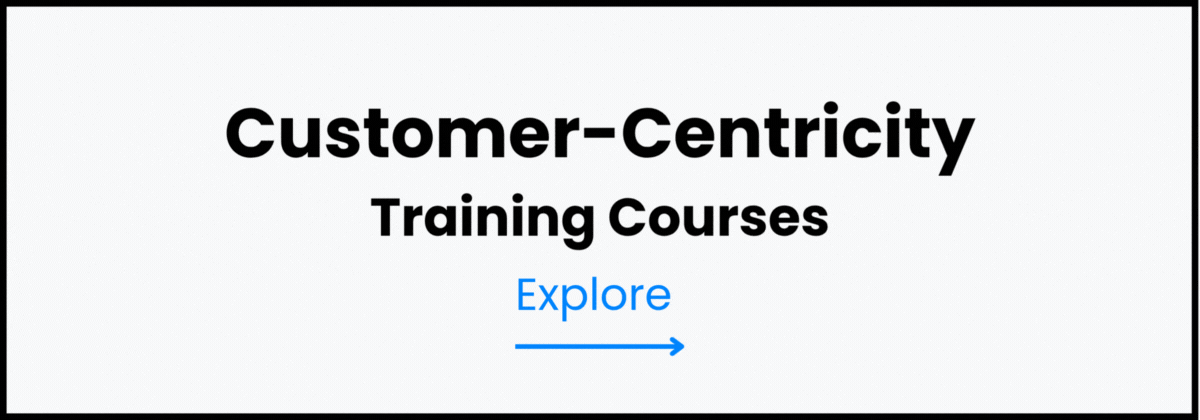Steps to Develop a Customer-Centric Company Culture
A customer-centric company culture goes beyond customer service—it reflects a mindset embedded into the DNA of the business, where every employee is aligned to deliver meaningful value to the customer.
Developing this culture requires more than slogans or service protocols. It involves reshaping internal values, breaking down silos, empowering employees, and aligning systems to truly prioritize the customer. This article outlines the key steps to building a customer-centric culture and offers practical insights on how companies can sustain this transformation for long-term success.
What Does It Mean to Be Customer-Centric?
A customer-centric culture is one in which every individual, from the C-suite to front-line staff, considers the customer’s perspective when making decisions. It is characterized by:
- Deep understanding of customer needs and preferences
- Empathy in communication and service delivery
- Cross-functional collaboration to deliver consistent value
- Continuous feedback loops for improvement
Being customer-centric means aligning your organizational goals, metrics, training, and leadership behaviors with the customer’s journey.
To dive deeper into the principles of customer-first thinking, explore EuroMaTech’s Customer Centricity Skill Page, which features specialized training for professionals committed to service excellence.
Why Culture Is the Key to Customer-Centricity
You can implement the best CRM tools, hire the most experienced salespeople, or create sophisticated customer journey maps—but without the right culture, these efforts will fall flat. A customer-centric culture:
- Increases customer loyalty and satisfaction
- Enhances employee engagement and performance
- Encourages innovation based on customer feedback
- Improves brand reputation and competitive positioning
Now, let’s explore the essential steps to build and sustain this kind of organizational culture.
Step 1: Define and Communicate a Clear Customer-Centric Vision
Every cultural transformation starts with a compelling vision. Leaders must clearly articulate what customer-centricity looks like in your organization and why it matters.
This vision should be:
- Aligned with your brand values
- Relevant to both internal and external stakeholders
- Actionable and measurable
Once defined, this vision must be communicated consistently across all levels—through leadership messaging, onboarding programs, internal campaigns, and daily practices.
The Building Customer-Centric Service Culture course provides the strategic framework to establish this vision and embed it into your organization’s core values.
Step 2: Empower Employees with Training and Autonomy
Your employees are the face of your customer experience. If they are not equipped and empowered, your service culture will remain theoretical.
To empower teams:
- Offer training in empathy, communication, and problem-solving
- Share customer insights and feedback regularly
- Give front-line staff autonomy to resolve customer issues on the spot
The Customer Service Professional course equips employees with practical tools and techniques to deliver exceptional service aligned with customer expectations.
Step 3: Align KPIs and Incentives with Customer Outcomes
If your team is measured solely on efficiency or revenue, customer experience will suffer. To reinforce a customer-first mindset, companies must:
- Use metrics such as Net Promoter Score (NPS), Customer Satisfaction (CSAT), and Customer Effort Score (CES)
- Include customer-centric goals in performance reviews
- Recognize and reward employees who go above and beyond for customers
When incentives and KPIs support the culture, employees are more likely to act in the customer’s best interest.
Step 4: Break Down Silos and Foster Cross-Functional Collaboration
Customer needs do not fall neatly into departmental boundaries. To provide seamless experiences, organizations must eliminate silos between sales, marketing, operations, IT, and service.
Tactics include:
- Cross-functional teams for customer journey mapping
- Shared goals across departments
- Integrated data and communication platforms
The Customer Management Specialist: Managing Service Quality and Customer Satisfaction course is ideal for professionals leading service transformation across departments.
Step 5: Listen to Customers—and Act on Their Feedback
A truly customer-centric organization not only collects feedback but actively uses it to improve services, products, and experiences.
Ways to incorporate feedback:
- Conduct post-interaction surveys and interviews
- Use social listening tools and customer sentiment analysis
- Create forums or panels for customer input on new initiatives
Close the loop by informing customers of changes made based on their suggestions. This shows that their voice truly matters and fosters trust.
Step 6: Lead by Example at Every Level
Culture starts at the top. Leaders must embody the values they promote. This includes:
- Talking about customers in strategic meetings
- Participating in customer support or service activities
- Publicly acknowledging team members who champion customer needs
When leadership prioritizes customer experience in both words and actions, the rest of the organization follows.
The Customer Service Excellence course supports leaders in developing a personal commitment to service excellence and in translating that into influence across the organization.
Step 7: Foster a Culture of Continuous Improvement
Customer expectations evolve constantly. A customer-centric culture must be agile enough to adapt.
Foster continuous improvement by:
- Encouraging experimentation and feedback
- Recognizing and learning from service failures
- Benchmarking performance against customer needs—not just competitors
Teams that are committed to learning and iteration will maintain a customer-first edge over time.
Step 8: Align Sales with Service Culture
Sales plays a critical role in shaping customer expectations. A customer-centric sales approach ensures that customers receive honest guidance, not just persuasive pitches.
Adopt consultative selling by:
- Understanding the customer’s challenges and goals
- Recommending solutions that genuinely meet their needs
- Following up after the sale to ensure satisfaction
The Customer-Centric Selling Master Class teaches sales professionals how to sell with integrity and long-term value in mind—key components of a customer-first mindset.
Embedding Customer-Centricity for Lasting Impact
A global logistics company recognized that while it had invested heavily in customer service technology, satisfaction scores remained stagnant. Upon evaluation, leadership discovered:
- Internal teams were working in silos
- KPIs focused on speed, not quality
- Employees lacked autonomy to address issues
After launching a cultural transformation that included cross-functional training, revised performance metrics, and executive engagement in customer feedback, the company saw:
- A 25% increase in NPS
- Higher employee satisfaction
- Reduced customer churn
This transformation highlights that tools and processes are not enough—culture drives experience.
Measuring the Success of Customer-Centric Culture
To track progress, monitor:
- Customer retention and loyalty
- Employee engagement levels
- Complaint resolution times
- Customer satisfaction and feedback trends
A well-executed culture will show improvements not only in customer-facing metrics but in overall operational efficiency and employee morale.
Make Customers the Heart of Your Business
Creating a customer-centric culture is not a one-time initiative—it’s a sustained commitment to putting the customer at the core of your company’s mission, operations, and leadership philosophy. When organizations align values, training, systems, and behaviors around customer needs, the results are powerful: loyal customers, motivated employees, and a reputation for excellence.
Whether you’re just beginning your transformation or looking to refine your strategy, EuroMaTech offers expert-led training to guide your journey:
- Customer Centricity Skill Page
- Building Customer-Centric Service Culture
- Customer Service Professional
- Customer Management Specialist
- Customer Service Excellence
- Customer-Centric Selling Master Class
Start today—because the most successful businesses are the ones that never stop listening to their customers.





